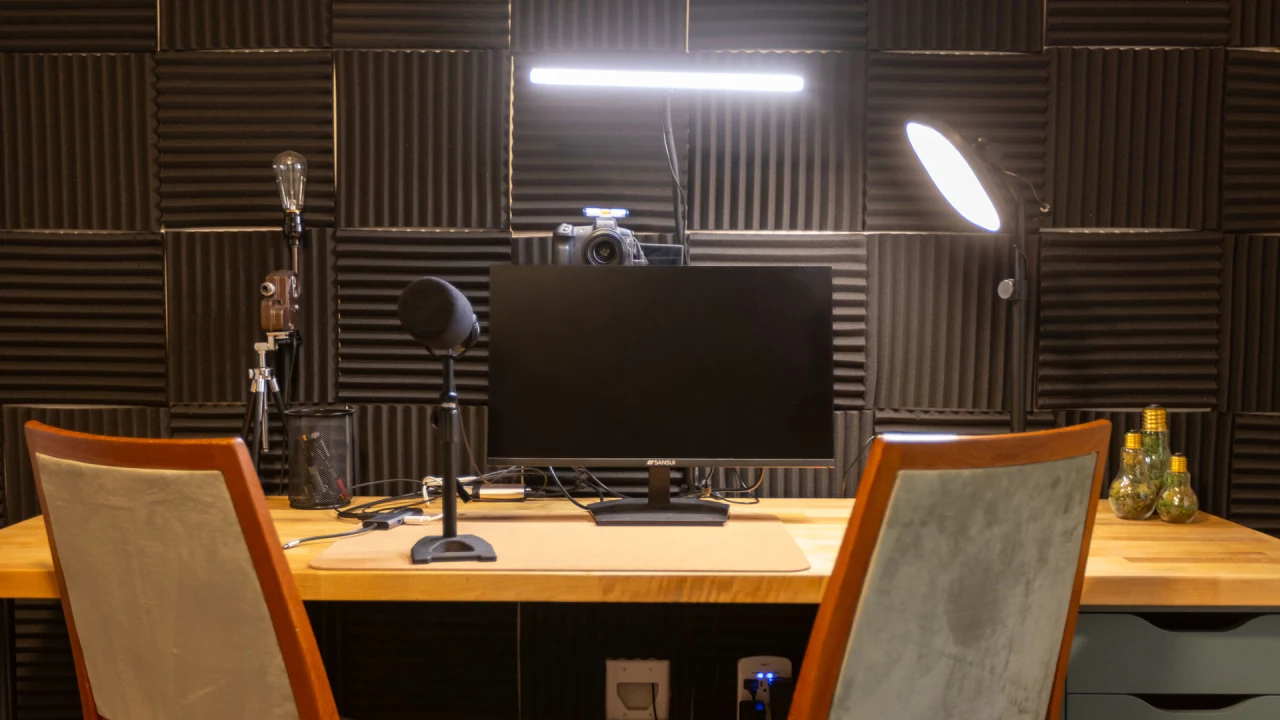BY SARAH LYNCH for INC.
For years, people looking to put their best foot forward at work might have needed to wear the right suit or have good hygiene. Today, they may also need to have the right Zoom lighting.
When the pandemic abruptly sent millions of Americans home to work remotely, many started spending hours staring at their own face on virtual conference calls. Some didn’t like what they saw. A phenomenon dubbed “Zoom dysmorphia” emerged as people started seeking dermatological treatment (and even plastic surgery), specifically referencing how they looked on video calls. Demand for ring lights–or circular lights that can provide a more professional, flattering look on camera–surged, with remote work as one of the driving factors, according to Polaris Market Research.
Now, hybrid workplaces are starting to reflect the trend, too, offering more flattering lighting options for team members taking virtual calls.
Designers at Dyer Brown & Associates, a Boston-based architecture and interior design firm that works with startups as well as Fortune 500 companies, had already started incorporating some “camera-ready” lighting into clients’ workplace projects before the pandemic. But since then, this style of lighting (a minimal cost, according to the company) has become a standard design feature. Most often, it’s used in smaller office rooms or booths for individual users, say company representatives.
“We’ve all been in a room where there’s down lighting from above and you look terrible,” says Brent Zeigler, president and principal at Dyer Brown. “Nobody wants to sit in that room.”

At LinkedIn’s Sunnyvale, California headquarters, team members can enjoy vanity lighting on video calls. Photo: Jason O’Rear/Courtesy Gensler
Gensler, one of the largest architecture and design firms in the world, has also started incorporating more video-friendly lighting in small conference rooms to better reflect hybrid needs, says Greg Gallimore, a digital experience design leader at the company. These lighting features leverage a blend of “soft front light with top lighting” to help “distinguish a person’s profile from the background.”
The benefits of this approach are deeper than surface-level aesthetics, Gallimore claims. Instead of worrying about their appearances during client calls or company meetings, with more complimentary lighting, leaders and team members alike can feel more comfortable and focused, he says: “When you have confidence that you are presenting well…your attention shifts to the tasks at hand and maximizes your sense of personal productivity as a participant in the conversation.”
Some companies that have invested in better Zoom lighting see another benefit: demonstrating professionalism to outside parties.
Scott Terranova is the CEO of the Brooklyn Heights, Ohio-based wedding production company Sound Precision Entertainment, which offers DJ, photography, and videography services. Pre-pandemic, he would welcome clients to the office, but over the last two years, the company’s in-person meetings have dropped by over 90 percent, as clients now prefer to meet on Zoom.
Terranova wanted to figure out a way to bring the experience that clients received when they came into to the office–which, he says, had always been a priority–to digital.

Replicating the Zoom room at Sound Precision Entertainment, the Ohio wedding production company, would take between $10,000 and $12,000, according to CEO Scott Terranova.Photo: Courtesy Cuff Link Media
In the fall, the company started a comprehensive Zoom room upgrade, complete with high-definition cameras, microphones, key lighting, hair lighting, and even decorative lights that change colors. The professionalism of the finished product has even prompted interest from outside parties looking to host virtual webinars in the space, Terranova says: “So we may have found even an additional kind of revenue driver that we didn’t necessarily even anticipate.”
At CamLock Films, an Austin-based video production company, the team put together a private Zoom room last summer after realizing they spent much of their day in Zoom meetings, says owner Morgan Bond. They set up a DSLR camera as a webcam, built a sound wall, and installed new LED lights behind the camera. Since then, it’s won them many compliments from clients and vendors, Bond says: “I think that they take us a little more seriously because we have a more professional looking setup.”
As more and more companies choose flexible work models, virtual meetings will likely continue to be a standard part of operations for many teams, both internally and externally, adding to the case for upgraded hybrid tech. But snazzy new equipment can also be costly. Implementing the technology that Sound Precision Entertainment used for its Zoom room would cost between $10,000 and $12,000, Terranova estimates, though he says companies could do it on the cheap for closer to $5,000 or $6,000.
Companies should carefully consider if an upgraded Zoom room or better Zoom lighting is worth the investment–and if they don’t use Zoom frequently, it likely isn’t, Bond says. But if they do, and if their competitors do, having a better-than-average setup could set their company apart, Terranova claims.
“We always ask ourselves…do we want to do what everyone else is doing?” he says. “Or, do we want to provide a premium experience for our client base?”
